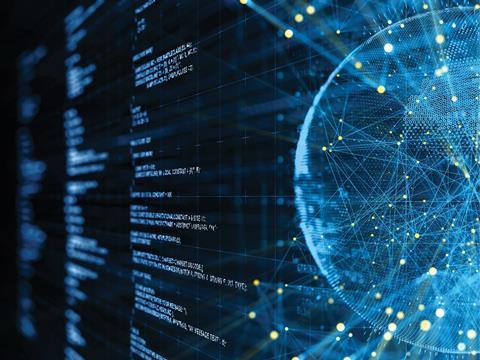
Artificial intelligence (AI) has become a buzzword, but it is often misunderstood and its true capabilities are sometimes misrepresented. In this interview with software development expert Peter Spring from Mettler-Toledo Product Inspection, we will unravel some key buzzwords, clarify AI’s distinction from machine learning, and explore how these technologies are transforming the industry.
What is AI? Is it here already in the industry? Where can we see it?
Simply put AI is intended to think on its own in a manner that matches or surpasses human intelligence. It is designed to learn and adapt, to make a decision tomorrow that is better than today.
To do this, AI needs a lot of data – it involves the utilisation of advanced algorithms and models to analyse vast amounts of data, identify patterns and derive meaningful insights. Unlike traditional computing, AI systems can handle complex tasks, solve problems and exhibit a level of intelligence that enables them to respond effectively to diverse scenarios.
While AI is present in high-end systems and applications, it is not yet significantly impacting production lines. However, it is extensively used for analysis, modeling, and prediction. For instance, in food safety, AI can enhance the security of supply chains, increase productivity and detect machine issues before they occur.
What is machine learning?
Machine learning is a subset of AI that focuses on the development of algorithms and statistical models that enable computers to learn from data and improve their performance. Often it focuses on a specific task such as a voice recognition system. The system may sound intelligent, and you may think it is AI, but it will not have an advanced understanding of the language - it simply listens for key sounds, and upon detecting these will perform certain tasks.
Machine learning algorithms are designed to simply learn and adapt from the data, refining their performance over time. An example of machine learning in the food industry is the predictive maintenance feature on some production machines. Within these systems, data from machines is analysed to predict potential breakdowns and optimise part replacements, ultimately reducing downtime.
How do they differ?
While machine learning is a component of AI, AI encompasses more than just learning from data. AI possesses the ability to think, reason, and adapt to new situations, enabling it to come up with novel solutions that have not been pre-set. Machine learning, on the other hand, focuses on training models on data to make predictions or perform tasks.
Why is there confusion?
The confusion surrounding AI stems from its wide application and the misuse of the term. Often, AI is used interchangeably with machine learning or other technologies, leading to misconceptions about its true capabilities. It is crucial to understand that AI represents intelligent decision-making and problem-solving abilities beyond mere data processing.
What benefits do they bring?
Both AI and machine learning offer numerous benefits to the food industry. AI can enhance food safety and security, streamline logistical processes and improve productivity. By automating manual tasks, companies can leverage AI to make their workforce more valuable by training employees to work alongside intelligent systems. Machine learning, in particular, enables predictive maintenance, optimising machine performance and reducing costly breakdowns.
Are there disadvantages?
While the potential of AI is immense, there are certain risks and challenges. The quality of data fed into AI systems is paramount, as “rubbish in, rubbish out” applies here. Incorrect or biased data can lead to flawed decisions. Additionally, if AI systems operate autonomously without proper safeguards, a small error or malfunction in one part of the system can have cascading effects. Ensuring human oversight and implementing safeguards are essential to mitigate these risks.
How far are we from having AI in this industry?
AI is already making its presence felt in high-end systems and applications within the food industry. However, its widespread integration into production lines is yet to be realised fully. As technology advances and connectivity improves, AI’s potential for transforming operational processes will continue to increase.
How can product inspection work with AI?
Product inspection technology solutions can play a crucial role in enhancing AI capabilities. By integrating product inspection with AI systems, comprehensive data from multiple applications, devices, and processes can be accessed, enabling more informed decision-making.
This wealth of data can be analysed by AI algorithms to identify patterns, predict outcomes and optimise various aspects of food production. For example, AI can utilise our data to optimise energy consumption, identify environmental influences, and create predictive maintenance schedules, thereby streamlining operations and enhancing overall efficiency in the food industry.
What is the next big step for AI within the food industry?
The digitization of the food industry, driven by initiatives like track and trace systems, holds immense potential for AI integration. By leveraging AI, the industry can enhance food safety, improve productivity and optimise logistical processes. Furthermore, the seamless integration of AI with existing systems and applications can enable comprehensive data analysis and informed decision-making, leading to greater efficiency and automation.
AI and machine learning are powerful technologies with the potential to revolutionise the food industry. While AI represents the pinnacle of intelligent systems capable of adaptive decision-making, machine learning focuses on data-driven predictions and tasks.
By harnessing the benefits of AI and machine learning, manufacturers can enhance food safety, streamline operations and make better-informed decisions. As technology continues to advance, the future holds exciting possibilities for AI integration, leading to a more efficient, productive, and safe food industry.
If you liked this article, you might also enjoy:
The Lidl approach to packaging sustainability
How did Brazil achieve its 100% aluminium can recycling rate – and can it be replicated in the EU?
Experts have their say on the EU’s Packaging and Packaging Waste Directive revisions
A deep dive into the most important packaging sustainability trends and solutions











No comments yet